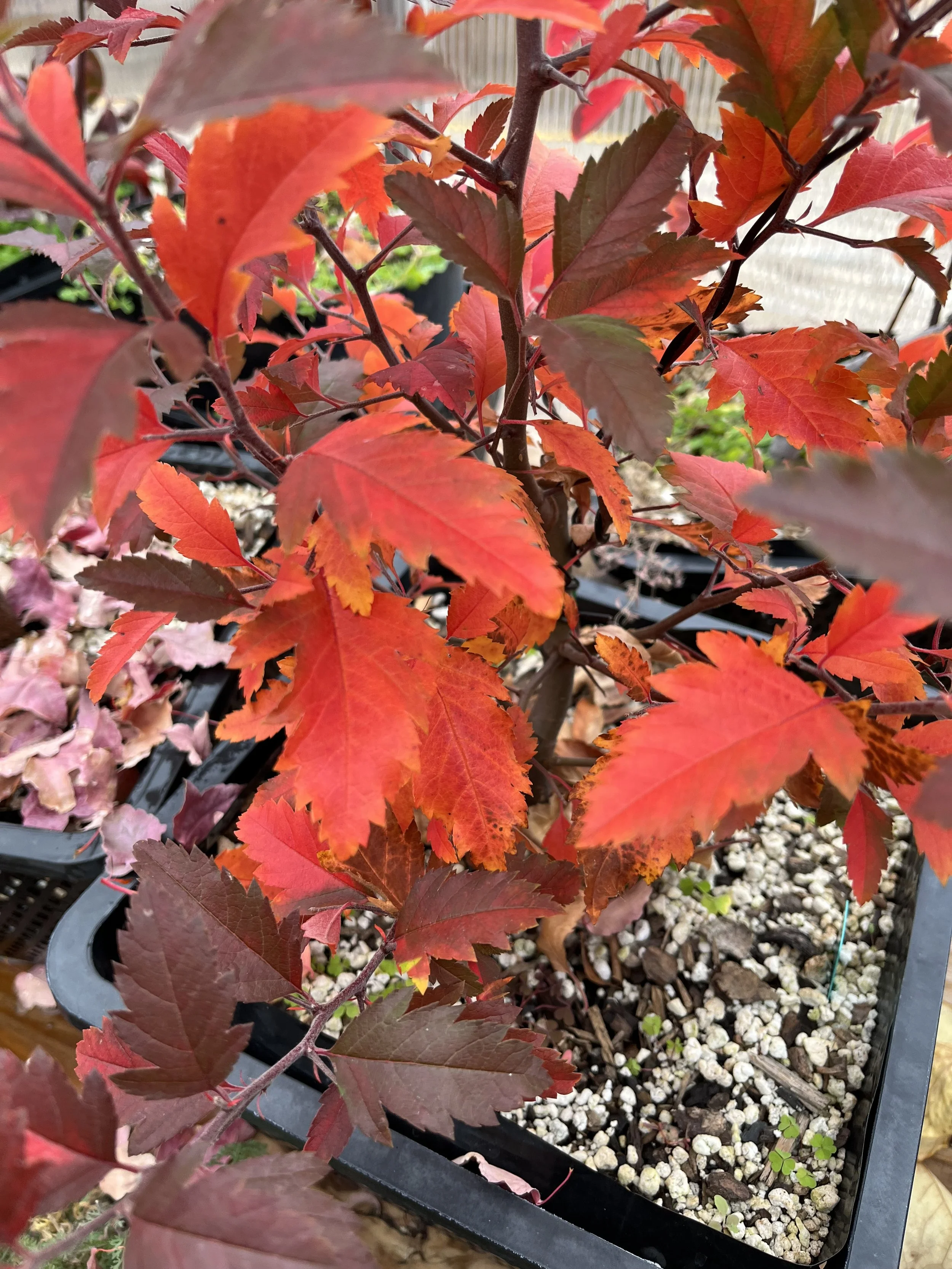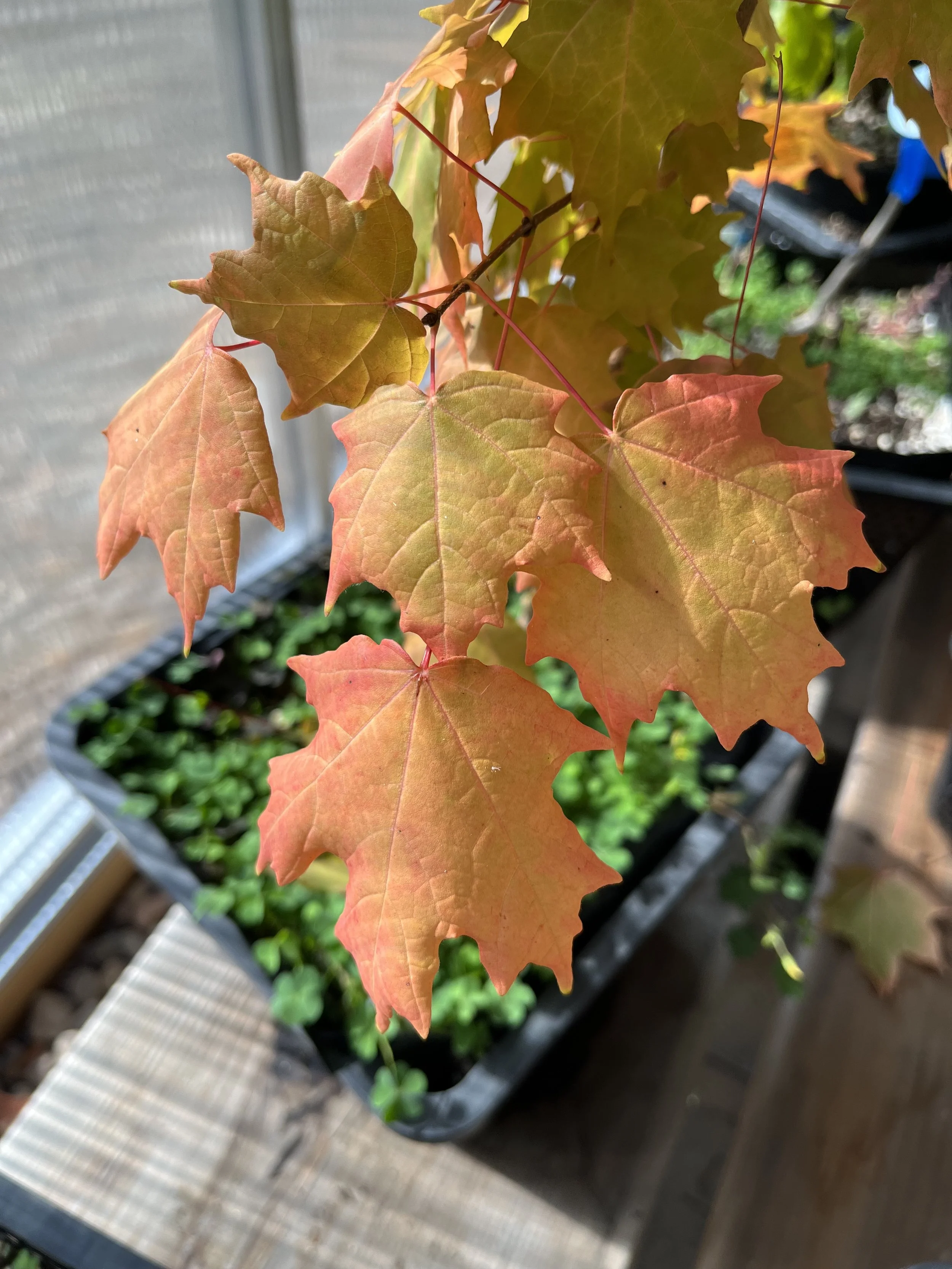The Autumn show
Deciduous trees are our favorites at Hardy Bonsai for many reasons, one of which is the seasonal diversity. Among all of the seasons, fall stands out as one of the most beautiful to enjoy deciduous bonsai and to venture into a hardwood forest. The smells, the cool air, the falling leaves of reds, purples, oranges, and yellows lit up by the low angle of the sun. Why do the leaves of deciduous trees change colors? Why are different colors expressed in different genera and even different trees of the same species in the same stands? What influences the intensity of the colors?
As deciduous trees photosynthesize throughout the growing season, chemical reactions occur between sugars and cyclic compounds within the leaves. In some deciduous trees, a byproduct of these reactions are glycosides called anthocyanins. Anthocyanins are capable of producing colors of pink, red, and purple. During the growing season, the colors produced by anthocyanins are usually masked and overpowered by the green color of chlorophyl. As summer turns to autumn, the process of chlorophyll production begins to slow as the photoperiod is reduced and the temperature begins to drop. As chlorophyll levels in the leaf of certain species drops, the overpowering green pigments within the leaf fade and the anthocyanins that were always present within the leaf are revealed. The formation of anthocyanins within leaves is increased by both the hereditary potential of a particular tree as well as environmental conditions.
Certain species such as maples, and certain genotypes within a species have the potential to accumulate more carbohydrates during autumn, and so create more intense pink, red, and purple colorations as more anthocyanins are also produced. Environmental factors that favor the synthesis of carbohydrates and the conversion of insoluble to soluble carbohydrates increase the potential for vivid leaf colors. Among these factors that ultimately favor more intense colors from anthocyanins are high light intensity, low temperatures, and mild drought conditions. The above reasons are why in Aspen forests, a small percentage of trees express reds instead of the typical yellows during Autumn.
Speaking of other colors, why do some deciduous trees express different colors such as yellows, oranges, and browns? Some species and genotypes of deciduous trees do not have the potential to accumulate anthocyanins in their leaves. However, in the fall, these trees still expend chlorophyll and do not regenerate it revealing colors neither masked by chlorophyll nor anthocyanin. In anthocyanin-free trees, carotene is responsible for oranges, xanthophylls for yellows, and tannins for browns. Carotene is utilized by the leaf to transmit light energy to chlorophyll cells and protect the leaf from damaging photosynthetic chemical byproducts. Xanthophylls are utilized to protect the leaf structure from damaging intense solar radiation that is in excess of what the is required for photosynthesis. Lastly, tannins help protect tree leaves from being eaten by animals.
In deciduous species that display pinks, reds, purples, oranges, and yellows all at once, anthocyanins are being produced while other compounds are being revealed. Interestingly, research has found that trees with a free growth habit (i.e. continuous growth throughout the season) start to change colors from the interior of the crown, while those with fixed (single or double flush) begin to change on the outside of the crown. We have found this to be true with the deciduous trees in our garden.
Enjoy the Fall color, and keep growing!
-Hardy Bonsai




